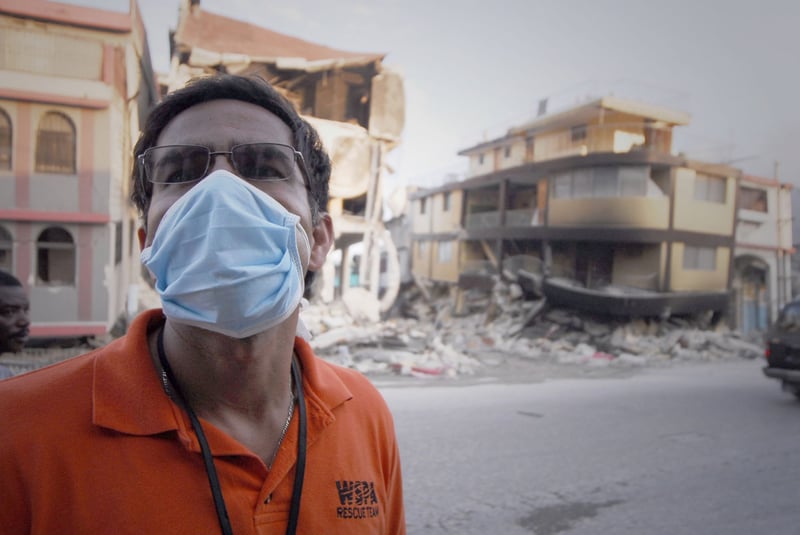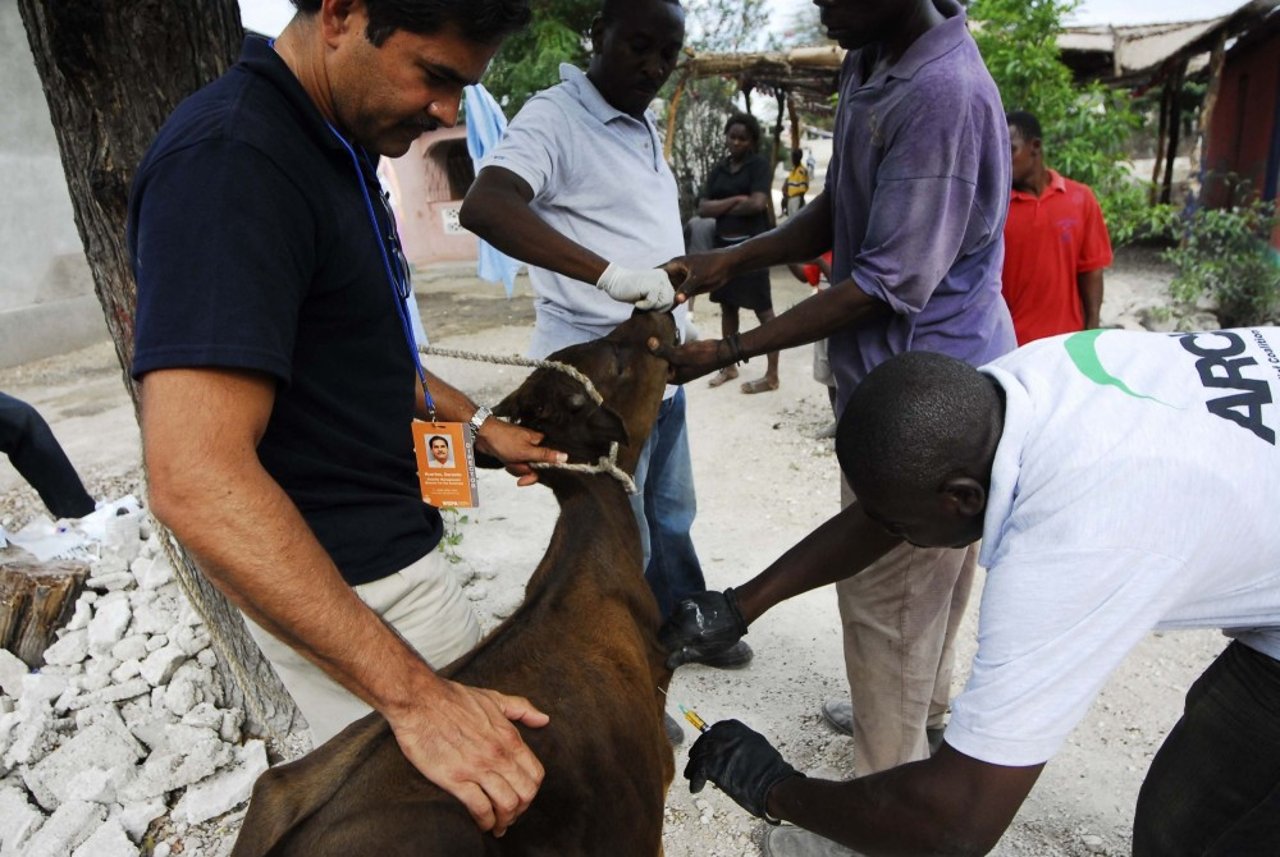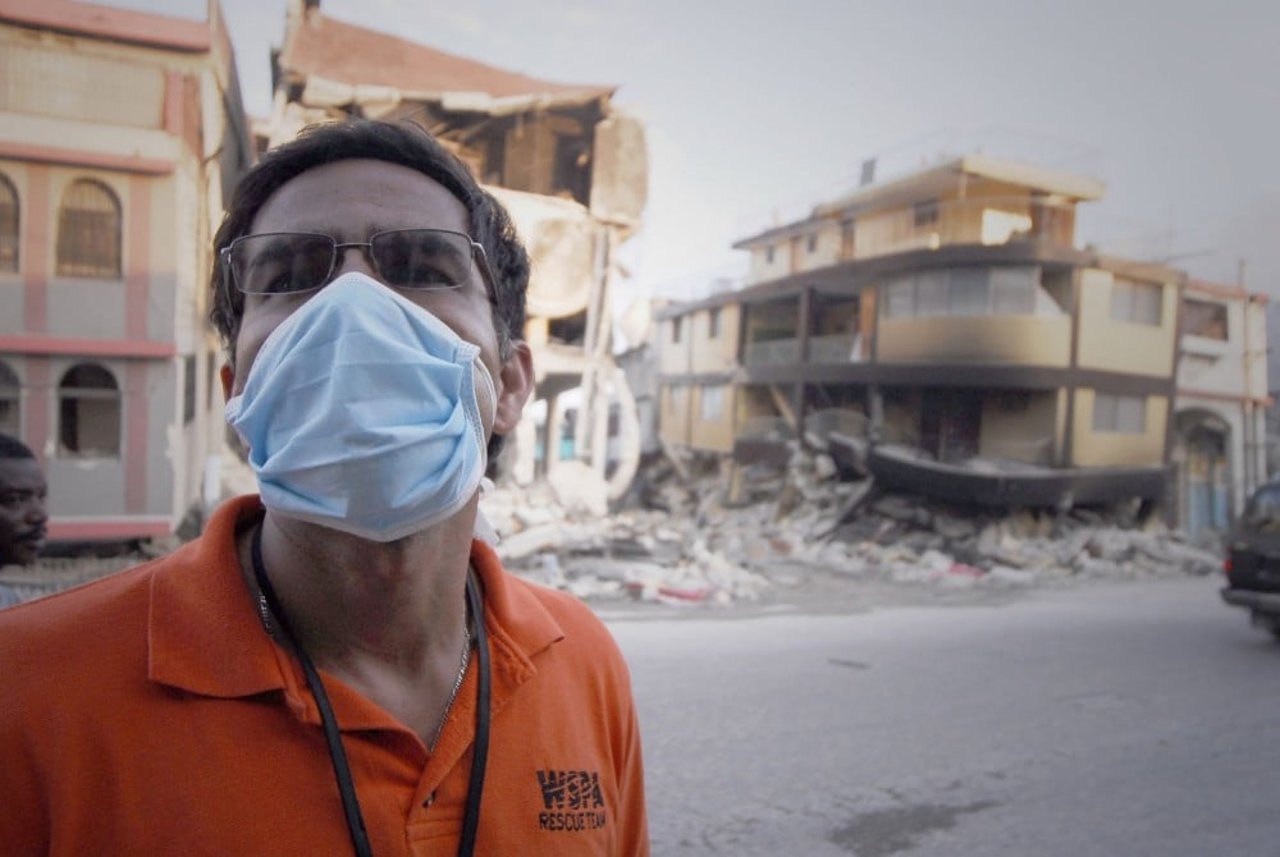
Reflecting on the Haiti Earthquake
News
My first memories of the Haiti earthquake are of the airport. Like the country it served, the airport was in a state of chaos. Giant cargo planes were unloading vehicles and emergency relief for people and no one seemed in charge.
The first thing that caught my attention was the smell of death all over the city. In Port au Prince, collapsed buildings were everywhere, making it very dangerous for locals and their animals.
One particular dog called my attention. He looked old and stiff, with many tiny scars all over his body. His skin was full of debris dust and his eyes tired, but he slowly approached my team nevertheless. His slowness was not from fear but because he could not walk any faster. He needed help, not just food but veterinary attention, and he figured we might be the ones to do it.
For nearly a year and half we swept the capital several times, helping animals like the dog we first saw, with injuries from fallen walls, cuts from broken glass, debris and steel, or diseases product of the collapse of the veterinary services in that country.
We trained local veterinarians to by kinder to animals and equipped them with all they needed to provide the best care possible to all kinds of animals they might encounter in the while venturing out in our mobile clinic. The owners sure were happy to see us arrive at each neighbourhood we visited, day after day, week after month, month after month.
We then went outside the capital and installed equipment powered by solar panels to maintain the cold chain necessary to transport vaccines and keep the health of many more farm animals in Haiti. That reached countless horses, donkeys, sheep, goat, cattle and poultry. At the end of the day, we provided relief and helped over 70,000 pets and farm animals in Port au Prince, and provided life saving medicines and improved veterinary services for many times more outside the capital.
We did good in Haiti, we did very good, but in times of need we can do even better, and that is what we are set to do from now on.
-- Gerardo Huertas, Program Director, Animals in Disasters
When disasters strike, the impact is devastating for animals and the communities that depend on them. So for more than 50 years, we‘ve helped governments and communities prepare for disasters, enabling people to protect animals and rebuild their lives. Tens of millions of people worldwide are dependent on their animals – for food, to earn a living, to stay healthy, as companions, for status, and to stay safe. That’s why the lives of animals and people are fundamentally linked. In the 50 years we have worked on disaster responses, we have provided aid to over 4 million animals.
World Animal Protection program director Gerardo Huertas handles a cow along with the ARCH vets, during a visit to the neighborhood of Lilavois 39 on the outskirts of Port au Prince where they treated about 200 animals.
World Animal Protection program director Gerardo Huertas surveys the damage in downtown Port au Prince.
We trained local veterinarians to by kinder to animals and equipped them with all they needed

